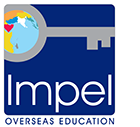This past November, the International Institute of Education (IIE) released its Open Door Report for 2014 during the 15th Annual International Student Week in Washington D.C. This annual census provides detailed data on many aspects of international education, such as the 8% increase to more than 886,000 international students studying in U.S. universities during the 2013-2014 academic year. Based on these students, the Open Door Report created a chart ranking the primary sources utilized by students to fund their U.S. education. Here are the top 3 ways international students fund their US education:
1. Personal and Family
2. U.S. College and University
3. Foreign Government or University
Personal and Family Funding
From the 2012-2013 academic year to the 2013-2014 academic year there was a 10.2% increase in the number of students who utilized personal and family resources to fund their education. For example, any savings you or your parents may plan on using to pay for your international education would fall under this category. Once in the U.S., some students have the opportunity to work to help with extra costs; this would also be considered personal funding.
However, in many instances what has been saved, or is being earned, is not enough to fully fund your international experience. This is when private loans, such as our international student loans, come in handy. Applications for international student loans are available year round, so they can be a great help for unexpected expenses that may occur. There are many types of loans out there, but it is important to find the right loan for you and your situation. If you and your family have been considering applying for an international student loan, use our Student Loan Comparison Tool to see what loan options are available for you.
U.S. College or University Funding
U.S. College and University funding did not demonstrate a significant change from one academic year to the next; in this year’s report, there was only an increase of 1%. Most universities provide need-based and merit-based assistance to incoming students, which includes any type of grant or scholarship awarded to you directly from you host institution. Each university’s admissions office works a little bit differently, so it is important for you to get in contact with them and see what they can offer you. Most schools provide basic financial aid information online in the financial aid sections or admissions page of their school website, so be sure to take a look.
Foreign Government or University
The third most used primary source of funding came from foreign governments or universities. The type of funding that could be available to you from your home country may depend on such things as your chosen field of study or whether there is a special program in place between your university in the U.S. and in your home country. In order to fully take advantage of what is available you must take the time to do your research. A great way to start is to reach out to all outlets possible, such as your country’s ministry of education, which will be able to give you information about what government programs are available for international studies.
The key to properly financing your international education in the U.S. is to try to receive financial assistance from all areas that are available to you. For more information and ideas you can check out our page Help Finance Your US Education.




